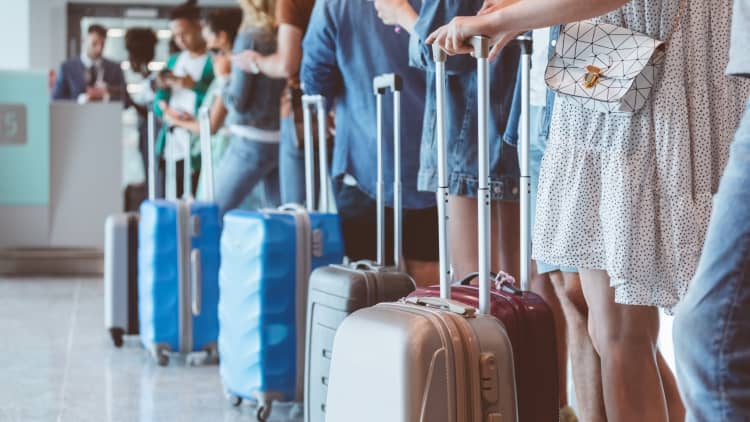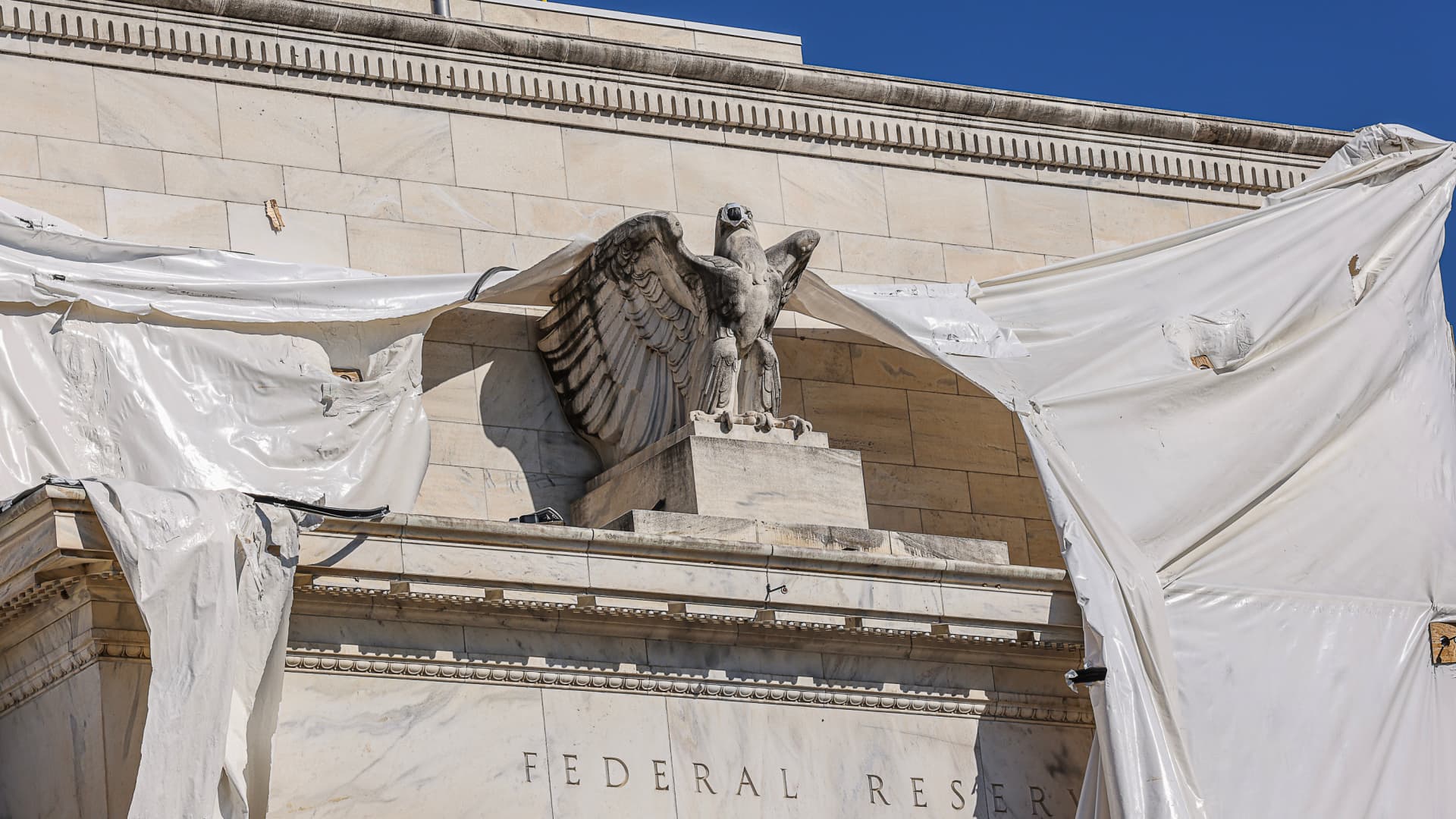A Southwest Airlines Boeing 737-700 aircraft lands at Ronald Reagan Washington National Airport in Arlington, Virginia, on May 7, 2023.
Nicolas Economou | Nurphoto | Getty Images
DALLAS — Southwest Airlines executives on Thursday outlined for Wall Street their vision to boost profits: extra legroom seats starting in 2026, assigned seating, international partnerships and overnight flights. Southwest’s new plan comes as its leaders seeks to fend off activist Elliott Investment Management, which has called for leadership changes.
Southwest said its three-year plan will add $4 billion to earnings before interest and taxes in 2027.
Southwest shares were up nearly 10% in early afternoon trading after it raised its third-quarter revenue forecast and said its board authorized $2.5 billion in share buybacks.
The airline said it expects unit revenue to rise as much as 3% in the third quarter over the same period last year, up from a previous forecast of a decline of as much as 2%, helped in part by rebooking passengers who were originally flying on airlines affected by July’s CrowdStrike outage.
Changes in the sky
Like with many changes in the airline industry, those new initiatives won’t happen overnight. Seats with extra legroom won’t debut until 2026, as the carrier requires Federal Aviation Administration approval and time to retrofit aircraft, according to a slide from Thursday investor’s presentation. It estimated that the new cabins, in which about a third of the seats will have additional legroom, will generate $1.7 billion in earnings before interest and taxes in 2027.
The new seats will have at least 34 inches of legroom, compared with a standard pitch of 31 inches, the airline said.
Southwest was under pressure to ditch its open seating and often chaotic boarding process.

“Looking at lapsed customers, the seating and boarding process is the number one reason they haven’t returned to Southwest,” said Southwest’s chief commercial officer, Ryan Green. “We were struck by how clear the message was. There is an absolute need for us to evolve our model to better meet customer preferences.”
Southwest on Thursday also said it will stick with its long-standing policy of allowing customers to check two pieces of luggage for free, saying it “generates market share gains in excess of potential lost revenue from bag fees.” Southwest executives have characterized getting rid of free checked bags as a third rail that would hurt bookings.
The carrier is also trying to cut costs. On Wednesday, Southwest told staff it will slash its service in Atlanta next year and could cut more than 300 flight attendants and pilots from the city in an effort to reduce costs.
The airline also said Thursday it would add Bob Fornaro, a well-respected industry veteran who previously led Spirit Airlines, to its board of directors. Southwest and Fornaro go back more than a decade. He had served as CEO of AirTran, the airline Southwest combined with in 2011, and was a consultant to Southwest after the merger.
Under pressure
Southwest Airlines 90s flight attendant uniforms.
Courtesy: Southwest Airlines
The Dallas-based airline enjoyed almost a half century of profits in an industry that’s known for booms and busts. It stuck with its simple business model of flying Boeing 737s, offering one class of service, and shying away from complexity that could add to its costs.
But pressure has mounted on Southwest’s CEO Bob Jordan and other executives in the years after the pandemic as costs have risen, global travel has returned and rivals have turned up the heat on premium offerings like plush lounges and roomier seats to capture big spenders. Over the last decade, U.S. competitors have added bare-bones basic economy fares and started charging for things that used to come for free, like seating assignments.
Southwest has also changed, offering longer flights, including to Hawaii, and customers are seeking more perks, comfort and technology, the airline’s executives have said.

Southwest has supported Jordan despite calls for his replacement by Elliott, which didn’t immediately respond to the airline’s plan it laid out on Thursday.
Jordan said at the investor day presentation that the company is still open to working with Elliott, which has a roughly 10% stake in the carrier.
“We have demonstrated that willingness time and again through our attempts and engagement, but time and again, Elliott has demonstrated little or no interest in collaborating with Southwest on how to deliver more shareholder value, focusing instead, as evidenced by their most recent letter and recent action, on tactics and on gamesmanship,” Jordan said. He called Southwest’s plan intentional and detailed.
“For Elliott to call that plan rushed and haphazard in my opinion, is inane,” he said.
The airline is facing a shortfall of new aircraft because of delays from Boeing, including a not-yet-certified 737 Max 7, the smallest plane in the family. Without a smaller aircraft, Southwest has cut unprofitable routes that might have been better served by airplanes with fewer seats to meet demand.
“We’ve taken dramatic steps to mitigate the operational risks of risk from future Boeing delays by significantly curbing our growth and arresting our hiring,” Jordan said at the event Thursday, adding that all of the airline’s growth through 2026 will come from efficiencies like turning aircraft around faster and red-eye flights.
He said “past financial issues caused by Boeing delivery delays and other Boeing issues have largely been resolved through the application of credits on future deliveries.”
— CNBC’s Rohan Goswami contributed to this report.








